
How to Use Step-Up Converter: Examples, Pinouts, and Specs
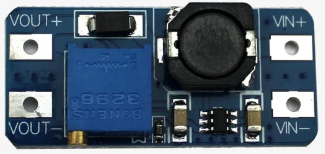
 Design with Step-Up Converter in Cirkit Designer
Design with Step-Up Converter in Cirkit DesignerIntroduction
The Step-Up Converter (ELC-X0122), manufactured by Custom Thermoelectric, is a DC-DC boost converter designed to increase an input voltage to a higher output voltage while maintaining power balance. This component is widely used in applications where a higher voltage is required from a lower voltage source, such as in battery-powered devices, renewable energy systems, and portable electronics.
Explore Projects Built with Step-Up Converter
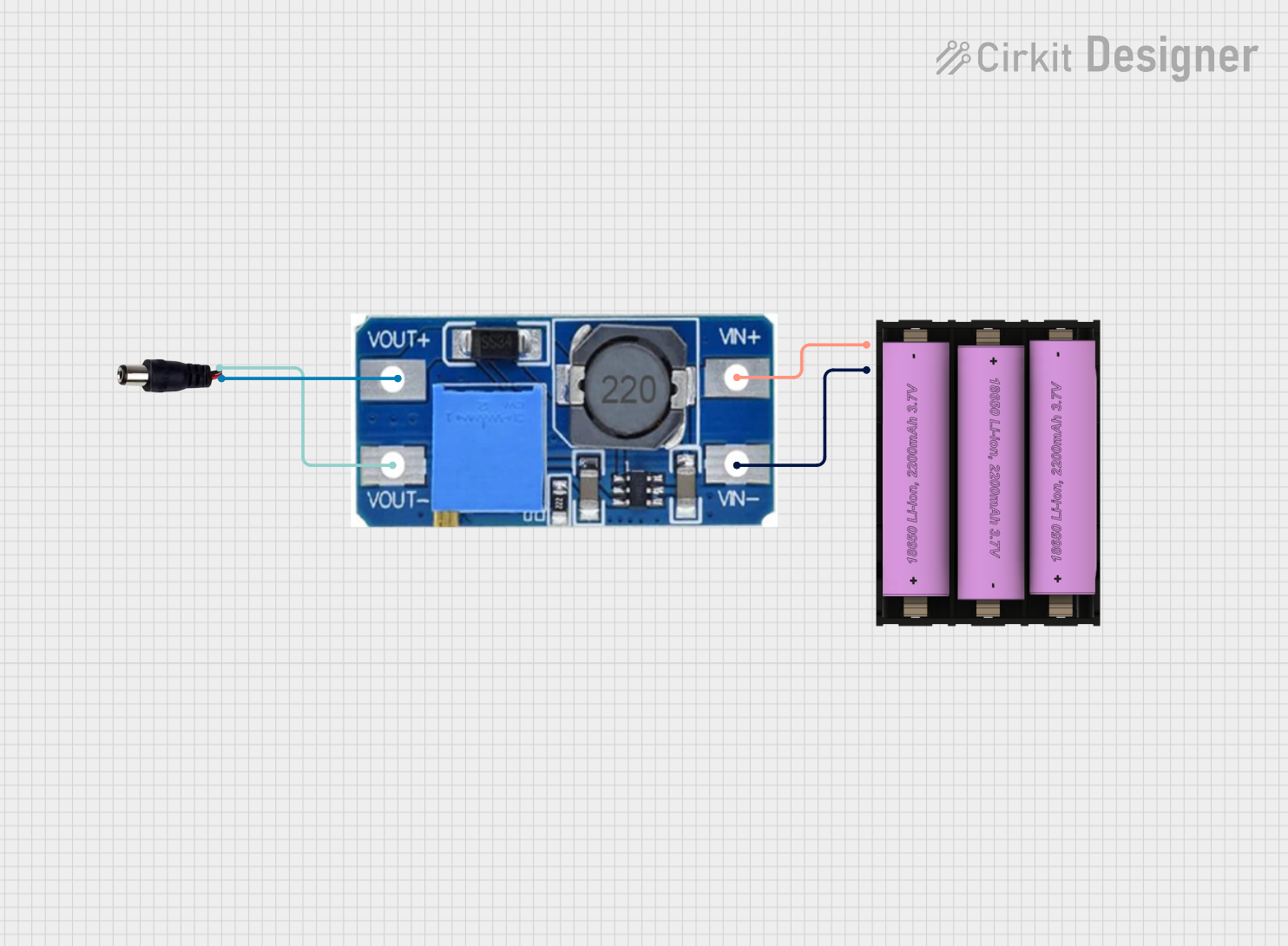
 Open Project in Cirkit Designer
Open Project in Cirkit Designer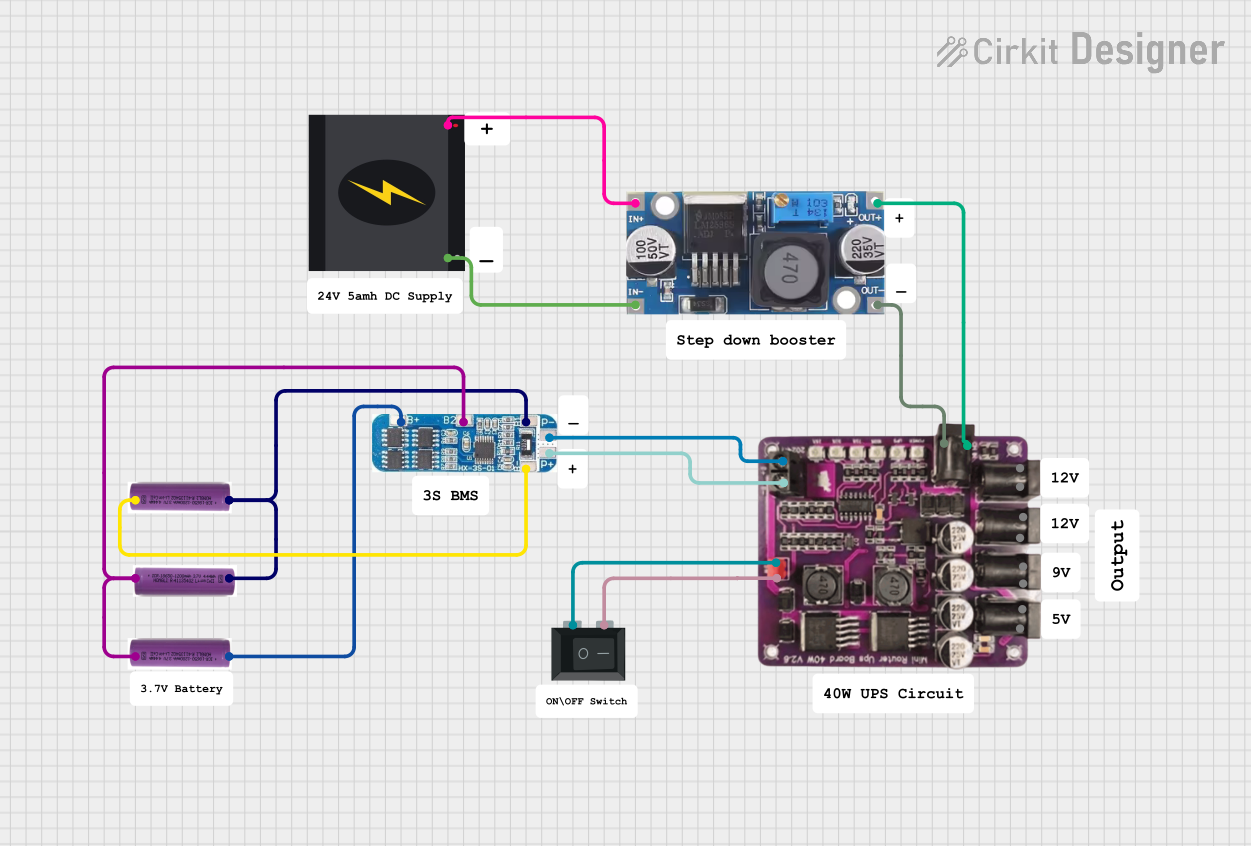
 Open Project in Cirkit Designer
Open Project in Cirkit Designer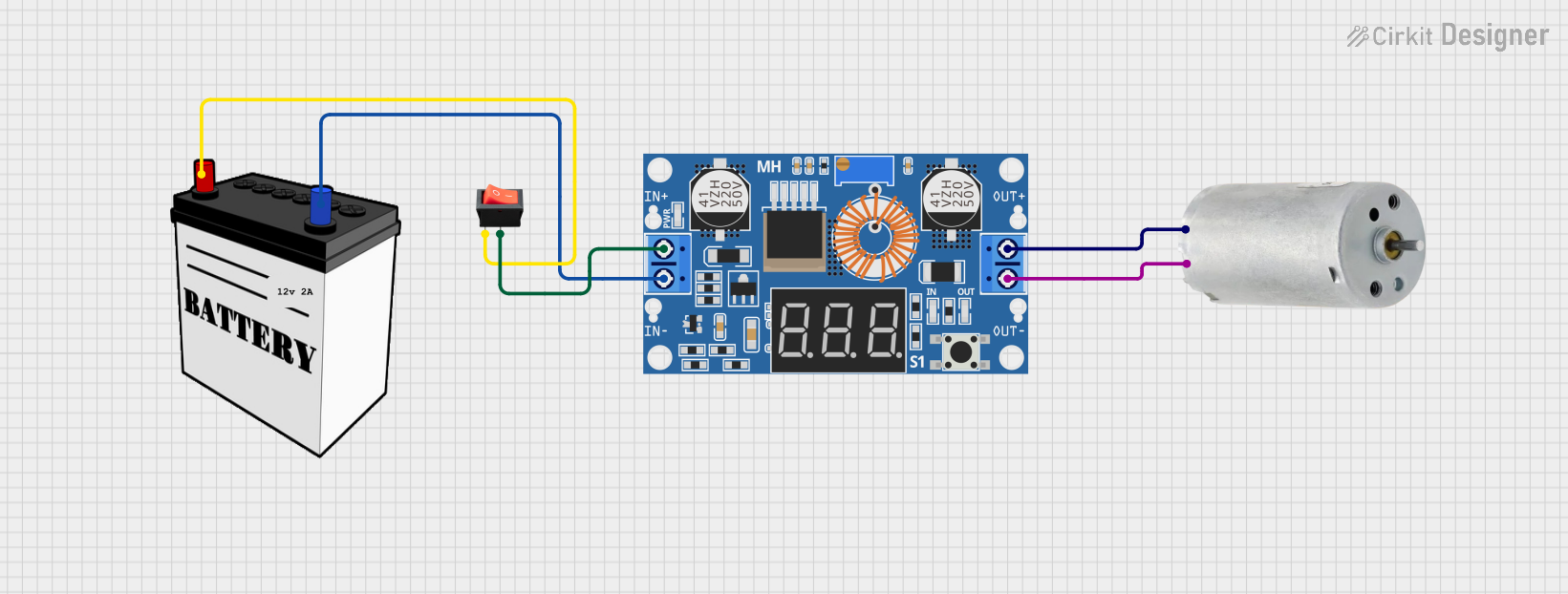
 Open Project in Cirkit Designer
Open Project in Cirkit Designer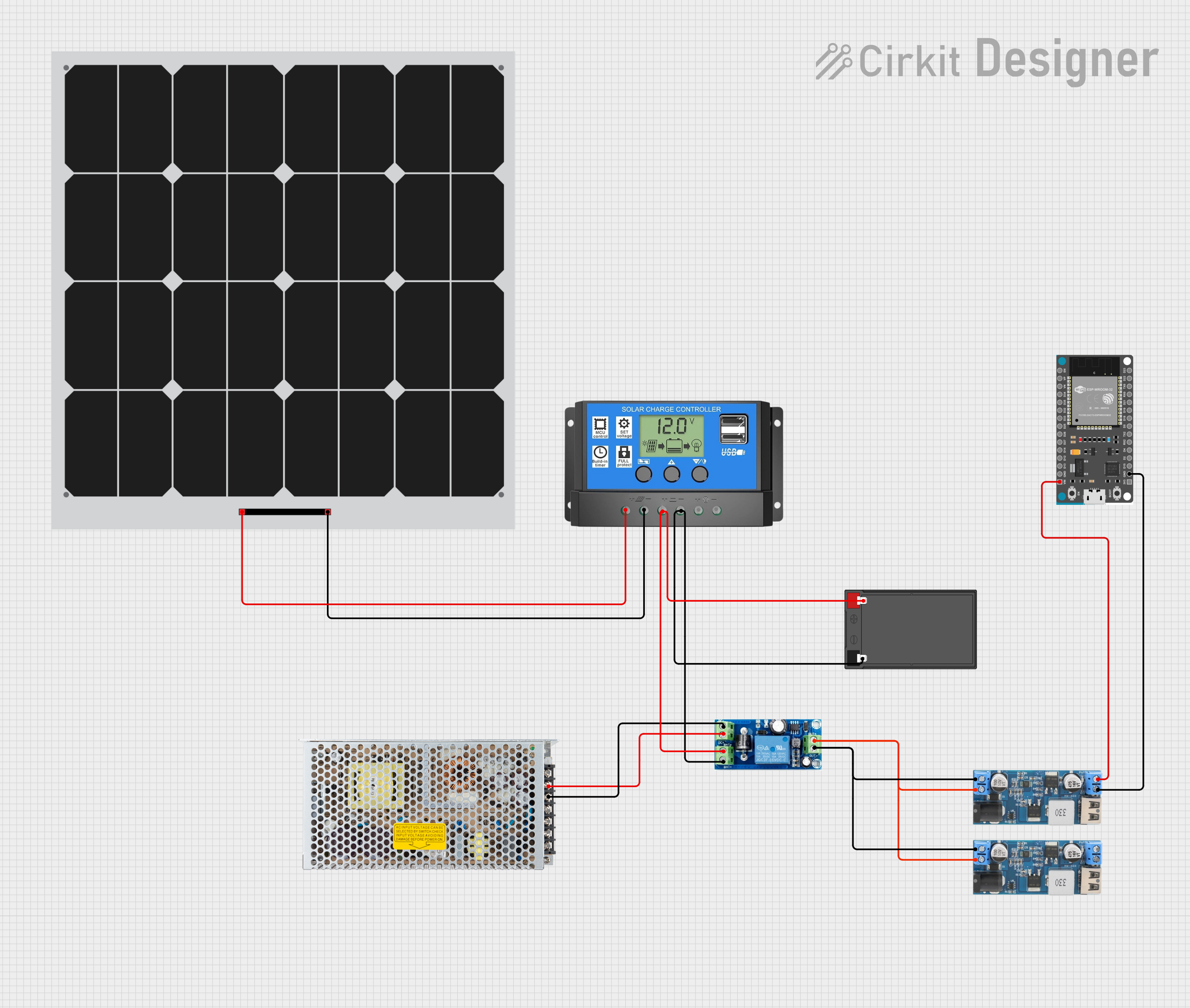
 Open Project in Cirkit Designer
Open Project in Cirkit DesignerExplore Projects Built with Step-Up Converter

 Open Project in Cirkit Designer
Open Project in Cirkit Designer
 Open Project in Cirkit Designer
Open Project in Cirkit Designer
 Open Project in Cirkit Designer
Open Project in Cirkit Designer
 Open Project in Cirkit Designer
Open Project in Cirkit DesignerCommon Applications and Use Cases
- Powering high-voltage devices from low-voltage batteries
- Solar energy systems to step up panel voltage
- LED drivers requiring higher voltage
- Electric vehicles and robotics
- Portable power banks and chargers
Technical Specifications
The following table outlines the key technical details of the ELC-X0122 Step-Up Converter:
| Parameter | Value |
|---|---|
| Input Voltage Range | 2.5V to 12V |
| Output Voltage Range | 5V to 24V |
| Maximum Output Current | 2A |
| Efficiency | Up to 95% |
| Switching Frequency | 1 MHz |
| Operating Temperature | -40°C to +85°C |
| Dimensions | 25mm x 20mm x 10mm |
Pin Configuration and Descriptions
The ELC-X0122 has a simple pinout for easy integration into circuits. The table below describes each pin:
| Pin Name | Pin Number | Description |
|---|---|---|
| VIN | 1 | Input voltage pin (connect to the power source) |
| GND | 2 | Ground pin (common ground for input and output) |
| VOUT | 3 | Output voltage pin (connect to the load) |
| EN | 4 | Enable pin (logic HIGH to enable, LOW to disable) |
| FB | 5 | Feedback pin (used for output voltage regulation) |
Usage Instructions
How to Use the Component in a Circuit
- Connect the Input Voltage (VIN): Attach the positive terminal of your power source to the VIN pin and the negative terminal to the GND pin.
- Connect the Output Voltage (VOUT): Attach the load to the VOUT pin and ensure the load's ground is connected to the GND pin.
- Enable the Converter: Use the EN pin to enable or disable the converter. Connect it to a logic HIGH signal (e.g., 3.3V or 5V) to enable the converter.
- Set the Output Voltage: Use a resistor divider network connected to the FB pin to set the desired output voltage. Refer to the formula in the datasheet for precise calculations.
Important Considerations and Best Practices
- Input Voltage Range: Ensure the input voltage is within the specified range (2.5V to 12V). Exceeding this range may damage the component.
- Output Voltage Regulation: Use appropriate resistors for the feedback network to achieve the desired output voltage.
- Heat Dissipation: At high currents, the converter may generate heat. Use a heatsink or ensure proper ventilation to avoid overheating.
- Capacitor Selection: Use low-ESR capacitors for input and output filtering to minimize voltage ripple.
- Inductor Selection: Choose an inductor with the appropriate current rating and low resistance to optimize efficiency.
Example: Using the ELC-X0122 with an Arduino UNO
The ELC-X0122 can be used to power an Arduino UNO from a low-voltage source, such as a 3.7V Li-ion battery. Below is an example circuit and code to enable the converter and monitor its output voltage.
Circuit Diagram
- Connect the battery's positive terminal to the VIN pin and the negative terminal to the GND pin.
- Connect the VOUT pin to the Arduino's VIN pin.
- Use a digital pin on the Arduino to control the EN pin.
Arduino Code
// Define the pin connected to the EN pin of the Step-Up Converter
const int enablePin = 7;
void setup() {
// Set the enable pin as an output
pinMode(enablePin, OUTPUT);
// Enable the Step-Up Converter
digitalWrite(enablePin, HIGH);
// Initialize serial communication for monitoring
Serial.begin(9600);
}
void loop() {
// Simulate monitoring the output voltage (example only)
Serial.println("Step-Up Converter is enabled and powering the Arduino.");
delay(1000); // Wait for 1 second
}
Troubleshooting and FAQs
Common Issues and Solutions
No Output Voltage:
- Ensure the EN pin is connected to a logic HIGH signal.
- Verify that the input voltage is within the specified range.
- Check for loose connections or damaged components.
Output Voltage is Incorrect:
- Verify the resistor values in the feedback network.
- Ensure the load does not exceed the maximum current rating (2A).
Excessive Heat Generation:
- Check for short circuits or excessive load current.
- Use a heatsink or improve ventilation around the converter.
High Voltage Ripple:
- Use low-ESR capacitors for input and output filtering.
- Ensure the inductor is properly rated for the application.
FAQs
Q: Can the ELC-X0122 be used with a 1.5V battery?
A: No, the minimum input voltage is 2.5V. Using a 1.5V battery will not power the converter.
Q: How do I calculate the feedback resistor values?
A: Refer to the formula in the datasheet:
( V_{OUT} = V_{REF} \times (1 + \frac{R1}{R2}) ),
where ( V_{REF} ) is the reference voltage (typically 1.25V).
Q: Is the ELC-X0122 suitable for powering LEDs?
A: Yes, it can be used to power LEDs, but ensure the output voltage and current are within the LED's specifications.
Q: Can I use the ELC-X0122 for audio applications?
A: Yes, but ensure proper filtering to minimize noise in sensitive audio circuits.